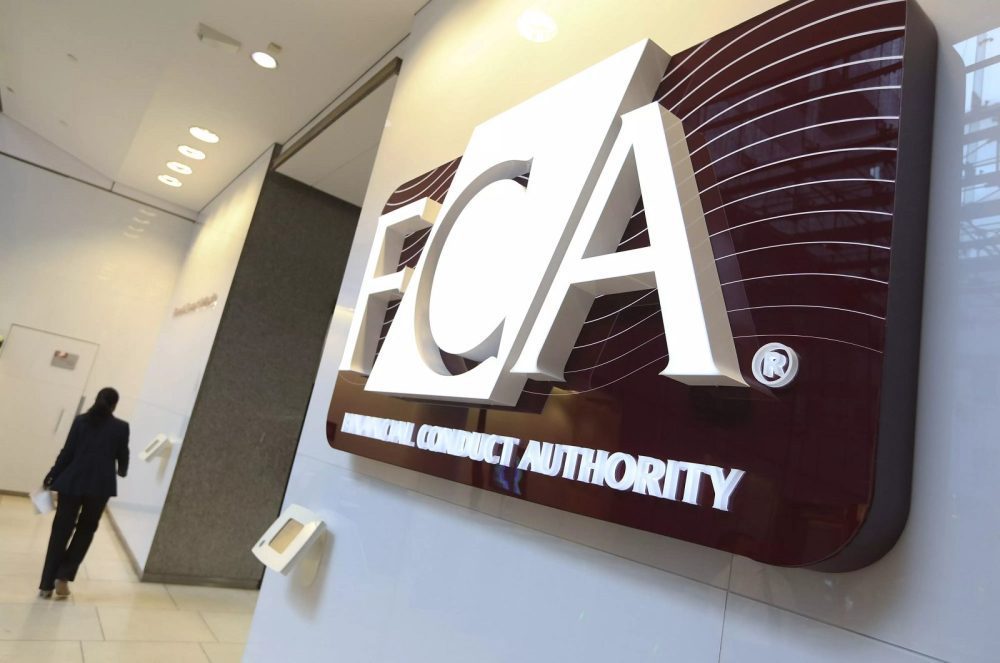by Huddleston Capital Management
Overview
At the beginning of the 2015, the two biggest questions in developed currency markets were when will the FED raise interest rates and when will a new deal between Greece and its creditors be struck?
As for the FED, it’s now mid-June, and any possibility of a rate hike in the near future was crushed under the weight of data. Arguably weakness in the U.S. is temporary and can be attributed to a cold winter season in the northeastern states and a work stoppage at the West Coast ports; but nevertheless, without the catalyst of strong data, market participants are left debating over September or December as the timing of the first hike. So, expect a continued long, gradual pace toward normalization. The global GDP growth rate also continues to slow compared to the rates of the past several years and is now expected to come in at 2.9 % in 2015 compared to 3.4% in 2014 (It should return to its long-term average of about 3.5 % in 2016). Against this backdrop of slowing global GDP growth rates, the U.S. dollar has remained within its recent upward trend.
A new proposal from Greece has sparked a ray of hope in Greece. In spite of the cautious optimism, the abiding question remains, “Will they stay or go.” After Greek Prime Minister Alexis Tsipras, lashed out at Greece’s creditors last week, accusing them of trying to “humiliate” Greeks, on Monday of this week, Greece submitted a new proposal for consideration at the emergency summit. Merkel dashed hopes that the crisis is over saying, “There are still a lot of days in the week in which decisions can be taken.” See notes below from the proposal:
“ Darling you got to let me know. Should I stay or should I go? If you say that you are mine. I’ll be here ’til the end of time. So, you got to let me know. Should I stay or should I go?
It’s always tease, tease, tease. You’re happy when I’m on my knees. One day it’s fine and next it’s black. So, if you want me off your back. Well, come on and let me know. Should I stay or should I go?”
My apologies these are the immortal words of the legendary punk rock band The Clash, not the Bank of Greece. But they seemed so fitting.
Anyway, the threat of a tail-risk event indicates the potential of an explosive move in the FX markets, with several USD-pairs sitting at important technical levels. One can’t help but feel that the massive reduction in Euro short positioning in the futures market means that there’s a considerable amount of cash on the sidelines that could come into play to dictate a major swing in price. And as expected, implied volatilities remain higher than historic volatilities in nearly all major pairings.
USA
The U.S. economy was vexed by a weak first quarter, contracting 0.7 %. The general assumption is that the weakness was more reflective of transitory factors, including harsh weather and port disruptions, and that growth should rebound meaningfully in the coming quarters. Fundamentals driving growth should remain strong, although the strengthening U.S. dollar may prove to be a headwind, particularly for the factory sector.
The U.S. dollar index has remained within its recent ranges in back and forward trading over the past month, although it has traded with a firmer tone overall. Hawkish commentary from Fed policymakers, including Fed Chair Janet Yellen, helped to underpin the U.S. currency. The greenback has not yet extended above the highs seen in March, but a resumption of trend of strength over time as corrective weakness in the U.S. dollar should be limited. Bottom line: Expect to see USD strength.
Implied Volatilities
EUR/USD: 1 Month At-the-Money Volatility 12.38 %
USD/CAD: 1 Month At-the-Money Volatility 8.29%
USD/JPY: 3 Month At-the-Money Volatility 7.64%
Euro (EUR)
Current EUR/USD rate is 1.1327
Greek developments have been a resounding negative, but their currency influence is limited. Medium-term EUR fundamentals remain negative, with the ECB’s balance sheet expansion to continue and given approaching Fed rate hikes. A modest economic recovery, easing deflationary pressures and sizeable existing FX short positions should limit the euro’s near-term decline. EUR/USD technicals are broadly neutral. The contagion story may not be over, and although lower this week, implied volatilities suggest a storm is brewing.
Implied Volatilities
EUR/USD: 1 Month At-the-Money Volatility 12.10 %
EUR/CAD: 1 Month At-the-Money Volatility 10.28%
EUR/JPY: 1 Month At-the-Money Volatility 11.26%
EUR/CHF: 1 Month At-the-Money Volatility 9.92%
Recommended Enhanced Yield Structure: Short EUR Forward.
• Short EUR/USD forward at 1.1330 for 2-Weeks.
• Sell 2-Week EUR Put/ USD Call with 1.1270 Strike (37 Delta).
• Forward’s implicit deposit rate is 0.56%.
• Yield from US dollar cash position 0.28%.
• Yield from option premium is 18.50% annualized.
• Structure’s yield is 19.06% annualized (from forward deposit rate and option’s premium) plus potential capital gain from EUR depreciation to 1.1270.
Australian dollar (AUD)
Current AUD/USD rate is 0.7713
U.K. inflation has turned negative; however, Bank of England policymakers have signaled the next move is likely to be policy tightening, albeit at a gradual and limited pace. Economic growth remains moderate, and sentiment surveys are soft. The U.K. /U.S. yield spread remains a key driver of the exchange rate and is consistent with a weaker pound, and FX positioning suggests potential for further weakness. Expect a steady to softer pound.
Implied Volatilities
AUD/USD: 1 Month At-the-Money Volatility 11.35 %
EUR/AUD: 1 Month At-the-Money Volatility 11.99%
AUD/NZD: 1 Month At-the-Money Volatility 8.28%
AUD/JPY: 1 Month At-the-Money Volatility 9.92%
Recommended Enhanced Yield structure: Short AUD forward.
o Short AUD/USD forward at 0.7710 for 2-Weeks.
o Sell 2-Week AUD Put/ USD Call with 0.7675 Strike (42 Delta).
o Forward’s implicit deposit rate is 2.07%.
o Yield from US dollar cash position 0.28%.
o Yield from option 6.41% annualized.
o Structure’s yield is 8.76% annualized (from forward deposit rate, U.S. deposit rate, and option’s premium) plus potential capital gain from AUD depreciation to 0.7675.
Great British Pound (GBP)
Current GBP/USD rate is 1.5776
The pound is mildly higher after continued releases of sturdy data. Growth and labor market strength continue to improve, and although there has been some softening in the sentiment surveys, they have remained strong. A rapid deceleration in the housing market would pose a risk, but it doesn’t seem likely as prices have eased but are still up 8.8% in Q2. BOE appear to have become more hawkish. Policy discussions are around timing of hikes. Technicals show GBP testing resistance. Expect a flat GBP.
Implied Volatilities
GBP/USD: 1 Month At-the-Money Volatility 7.59 %
EUR/GBP: 1 Month At-the-Money Volatility 10.24%
GBP/CAD: 1 Month At-the-Money Volatility 7.74%
GBP/JPY: 1 Month At-the-Money Volatility 8.57%
Recommended Enhanced Yield structure: Buy GBP Forward.
o Long GBP/USD forward at 1.5777 for 3-Weeks.
o Sell 3-Week GBP Call/ USD Put with 1.5780 Strike (48 Delta).
o Forward’s implicit deposit rate is 0.26%.
o Yield from US dollar cash position 0.28%.
o Yield from option premium is 12.73% annualized.
o Structure’s yield is 13.27% annualized (from forward deposit rate, U.S. deposit rate, and option’s premium), plus potential capital gain from GBP appreciate to 1.5780.
Canadian Dollar (CAD)
USD/CAD rate is 1.2336
Although highlighted the currency as a factor that could impact its outlook, the Bank of Canada said that current policy remains appropriate. Canada’s economy remains challenged by lower oil prices and a contrasting monetary policy stance with the U.S. will likely restrain the CAD. FX positioning is moderately short, while technicals suggest a continuation of USD/CAD upside. We will see a weaker Canadian dollar over time.
Implied Volatilities
USD/CAD: 3 Month At-the-Money Volatility 8.99%
GBP/CAD: 1 Month At-the-Money Volatility 7.74%
CAD/JPY: 1 Month At-the-Money Volatility 7.92%
Recommended Enhanced Yield structure: Long CAD forward
o Short USD/CAD forward at 1.2337 for 2-Weeks.
o Sell 2-Week USD Put / CAD Call with 1.2410 Strike (36 Delta).
o Forward’s implicit deposit rate is 0.00%.
o Yield from US dollar cash position 0.28%.
o Yield from option premium 10.53% annualized.
o Structure’s yield is 10.81% annualized (from forward deposit rate, U.S. deposit rate, and option’s premium), plus potential capital gain from CAD depreciation to 1.2410.
Japanese Yen (JPY)
Current EUR/JPY rate is 1.3947
Current USD/JPY rate is 123.62.
Soft inflation suggests that Bank of Japan policy should remain highly accommodative for some time even though Japan’s economy is recovering. Eventual Fed tightening should contribute to a weaker yen. As a safe haven currency, increased volatility in financial markets could restrain JPY’s declines. FX positioning offers limited scope for downside, and Technicals hint at additional declines for the JPY. Look for near-term consolidation before weakness continues.
Implied Volatilities
USD/JPY: 1 Month At-the-Money Volatility 7.63 %
EUR/JPY: 1 Month At-the-Money Volatility 11.26%
AUD/JPY: 1 Month At-the-Money Volatility 9.92%
GBP/JPY: 1 Month At-the-Money Volatility 8.57%
Recommended Enhanced Yield structure: Short JPY forward vs. EUR
o Long EUR/JPY forward at 1.3951 for 2-Weeks.
o Sell 2-Week EUR Call / JPY Put with 1.4000 Strike (44 Delta).
o Forward’s implicit deposit rate is 0.00%.
o Yield from US dollar cash position 0.28%.
o Yield from option premium 17.52% annualized.
o Structure’s yield is 17.80% annualized (from forward deposit rate, U.S. deposit rate, and option’s premium), plus potential capital gain from EUR appreciation to 1.4000.
Mexican Peso (MXN)
Paying particular attention to the MXN, economic slack and Fed policy, Mexico’s central bank continues to implement currency support measures extending daily U.S. dollar auctions at least through September. Also the central bank is maintaining its intervention mechanism to limit peso volatility and weakness. FX positioning offers some scope for Mexican peso weakness, while technicals are relatively neutral. After a limited recovery expect peso weakness to continue.
USD/MXN rate is 15.3676
USD/MXN: 1 Month At-the-Money Implied Volatility is 11.02 %
Recommended Enhanced Yield structure: Short MXN forward
o Long USD/MXN forward at position 15.3722
o Sell 2-Week 15.4000 Strike USD Call / MXN Put (45 Delta).
o Forward’s implicit deposit rate is – 2.52%.
o Yield from US dollar cash position 0.28%.
o Yield from option premium is 21.14% annualized.
o Structure’s yield is 18.90% annualized (from forward deposit rate, U.S. deposit rate, and option’s premium), plus potential capital gain from MXN depreciation to 15.40.
Russia Ruble (RUB)
Expect continued weakness in the ruble over the medium-term. The economy is contracting, while lower interest rate given an improving inflation outlook could also weigh on the currency. The rebuild of Russia’s foreign exchange reserves could reinforce currency weakness. The ruble will soften over time.
USD/RUB rate is 53.77
USD/RUB: 1 Month At-the-Money Implied Volatility is 20.32 %
Israeli Shekel (ILS)
Although Q1 GDP growth slowed and CPI slowed, with softer investment, exports and government spending, consumer spending held up reasonably well, and the Central bank held its policy interest at 0.10%. The April leading indicator rose, March manufacturing output rose, deflation has eased, and Prime Minister Netanyahu formed a coalition government in early May. That has led to some shekel resilience, although Fed tightening and possible Israeli FX intervention should see the shekel soften over time. Expect moderate weakness in the shekel.
USD/ILS rate is 3.7801
USD/ILS: 1 Month At-the-Money Implied Volatility is 8.11 %
HedgeThink.com is the fund industry’s leading news, research and analysis source for individual and institutional accredited investors and professionals










































